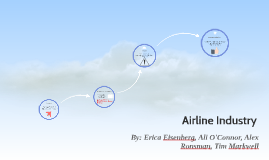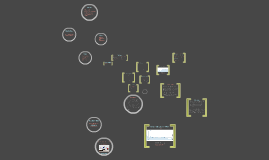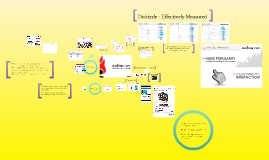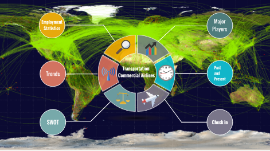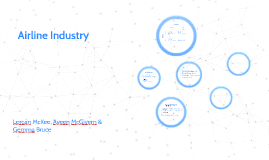Airline Industry
Transcript: Customers can diminish and narrow the zone of tolerance • Product/Service - largest airline in the Middle East, offering economy, business and first class services around the world • Price – Economy - £503.12; Business Class - £2712.12; First Class - £3712.12 • Place – Based at Dubai International Airport; Flights to 122 cities in 74 countries • Promotion – Example ‘Kids Go Free’ • People – Over 50,000 employees • Operates mixed fleet of 192 Airbus and Boeing wide-body aircraft Effected by level of service -> customers will be frustrated and their satisfaction with the company will be undermined with poor service quality. Whereas, if service performance is higher than the zone of tolerance, customers will be happy and satisfied Airports Available to the Customer: Regulations in Bulgarian Airports Safety Zone of tolerance - Introduction to the Market •Product/Service – Largest service provider of low cost flights to European destinations •Price - Low fares ranging from £1 to roughly £100! •Place – Based at Dublin and London Stansted Airport, Flights to 164 cities in 27 countries •Promotion – few promotions, example free flights for new destinations •People – Over 8,000 employees •Operates over 300 Boeing 737–800 aircraft Regulations in the United Kingdoms The Airline Industry Enhance service experience by arriving and boarding on time, keeping noise levels to a minimum. Diminish service experience by delaying flights, being noisy or disruptive •Introduction to Service Type and Industry •Comparison of United Kingdom social influence •Comparison of Bulgaria safety indicators •Conclusion •References • Product/Service – Long and short haul flights around the world. Fourth largest UK airline by passengers carried. • Price - Wide range of prices. Economy class and a premium economy service. • Place – Based in Manchester and London Gatwick, provides charter flights to holiday resorts in the Mediterranean, Africa, Asia and North America. - High street travel agents across the UK. • Promotion – £5million campaign including: "Kids for a quid", and the Price Parity scheme. • People – The Thomas Cook group employ 31,000 people. • Operates a fleet of 32 Boeing and Airbus aircraft. The regulations of air transport in Bulgaria are relatively poorer than those in the United Kingdom. Reasons for that may be the lower passenger flow and also the fact that Bulgarian airports haven’t suffered from some kind of a terror attack. The United Kingdom however have suffered a lot from these kind of attacks and have created a lot of regulations and safety measures Air Transport in Bulgaria Safety Overview of Service Providers Self Regulation Issues • 3 very different services • Customer Roles are the same -> have the same responsibilities to either enhance or diminish the service experience • The Service Encounter -> 2 phases: joining and intensive phase • The Servicescape -> airport provides the environment for the joining phase but Airline companies can provide additional cues to the aid the service experience; different aircraft design provided Overview Presentation Content General aviation in the United Kingdom •Ryanair •Thomas Cook Airline •Emirates In April 2011 Airport Sofia serviced 282 694 passengers, 13% more than the same period of 2009, when the record was 250 000 passengers. In 2011 passenger traffic at Bulgaria's three major airports - Sofia, Varna and Bourgas - grew up to near 10% on the year to 3.89 million in the first half of 2011, due to rise of customers using international routes and launch of new destinations. Difficulty with access to larger airports is compounded by a decline in the number of aerodromes generally, and existing sites are often threatened with closure and re-development for more profitable uses. References Conclusion •Bitner (1997) ‘Customer contributions and roles in service delivery’, IJSIM pg 193-195 •Chen, F.-Y. and Chang, Y.-H. (2005), "Examining airline service quality from a process perspective", Journal of Air Transport Management, Vol. 11, pp. 79-87 •Civil Aviation Authority Aircraft Register - for G- registered aircraft (February, 2013) •Holidayy Watchdog (September, 2008) http://www.holidaywatchdog.com/459-Sharm_El_Sheikh-Ritz_Carlton_Sharm_El_Sheikh_Hotel-Holiday-Review.html •The Economist, "Snarling all the way to the bank” 23 August 2007 •McKechnie, Donelda S; Grant, Jim; Golawala, Fatema Shabbir. ‘Partitioning service encounters into touchpoints to enhance quality’ International Journal of Quality and Service Sciences 3. 2 (2011): 146-165 •Segmenting the tourism marker, Paul Williams (November, 2008)http://www.insights.org.uk/articleitem.aspx?title=Segmenting%20the%20Tourism%20Market#Classical generic segmentation techniques •Target Market and Marketing Strategies of Emirates Airline (2010), Volume 3 ‘Zone of Tolerance’ - Yap, K.B. and Sweeney, J.C. (2007) Between 1995 and 2004 there were 2,630 accidents involving GA aircraft, of which 139 were fatal, resulting in the loss of 317






